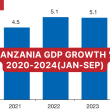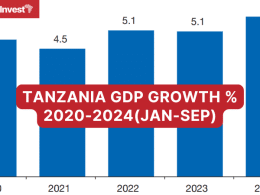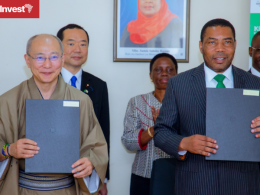In November 2024, the Tanzania Horticultural Association (TAHA) announced that Tanzania’s horticulture sector is witnessing growth, with a focus on commercial macadamia farming.
TAHA has been working with investors to develop a sustainable macadamia value chain, especially in northern Tanzania.
After over six years of research and substantial investment, TAHA has officially introduced macadamia as a new value chain in the horticulture sector.
TAHA’s CEO, Dr. Jacqueline Mkindi highlighted that Macadamia trees thrive in altitudes of 1,000 to 1,500 meters above sea level, with average rainfall and moderate temperatures.
She added that the ideal growing conditions for the trees are found in Tanzania’s northern highlands, southern highlands, and the Lake Zone.
Tanzania’s environment is capable of producing up to 42 nuts per cluster, surpassing the global average of 22, showing remarkable potential for high yields.
TAHA highlighted that starting a macadamia farm requires significant investment and is a long-term process, as it takes approximately five years for macadamia trees to mature and produce a profitable harvest.
During this period, farmers face challenges such as pest management, which can increase production costs.
The initial investment for one acre of macadamia farming is approximately US$ 2,400 (TZS 6.4 million).
Once the trees mature, one acre can generate annual revenues of up to US$ 12,000 (TZS 32 million).
Expanding to 10 acres requires an investment of US$ 24,000 (TZS 64 million), with potential annual revenues exceeding US$ 120,000 (TZS 319 million).
After five years, a one-acre farm can yield up to US$ 12,000 annually, turning the initial investment into a profitable business.
A 10-acre farm could generate up to US$ 120,000 annually, making macadamia a highly profitable crop for Tanzania.
TAHA provides essential guidance to farmers, helping them navigate the challenges of commercial macadamia farming.
Macadamia Trees and Nuts
The macadamia tree is a fast-growing, medium-sized evergreen tree native to Australia, specifically found in the regions of Queensland and New South Wales.
The trees usually begin producing commercially viable nuts approximately 7 to 10 years after planting and can continue to bear fruit for over 100 years.
Macadamia nuts are highly valued for their rich flavor and nutritional benefits, leading to significant growth in their market.
The global macadamia nuts market was valued at approximately US$ 1.45 billion in 2021 and is projected to grow at a compound annual growth rate (CAGR) of 10.9% from 2022 to 2030, potentially reaching around US$ 2.9 billion by 2030.
Globally, macadamia nuts are primarily produced in Australia, Hawaii, and increasingly in countries like South Africa and Tanzania.










